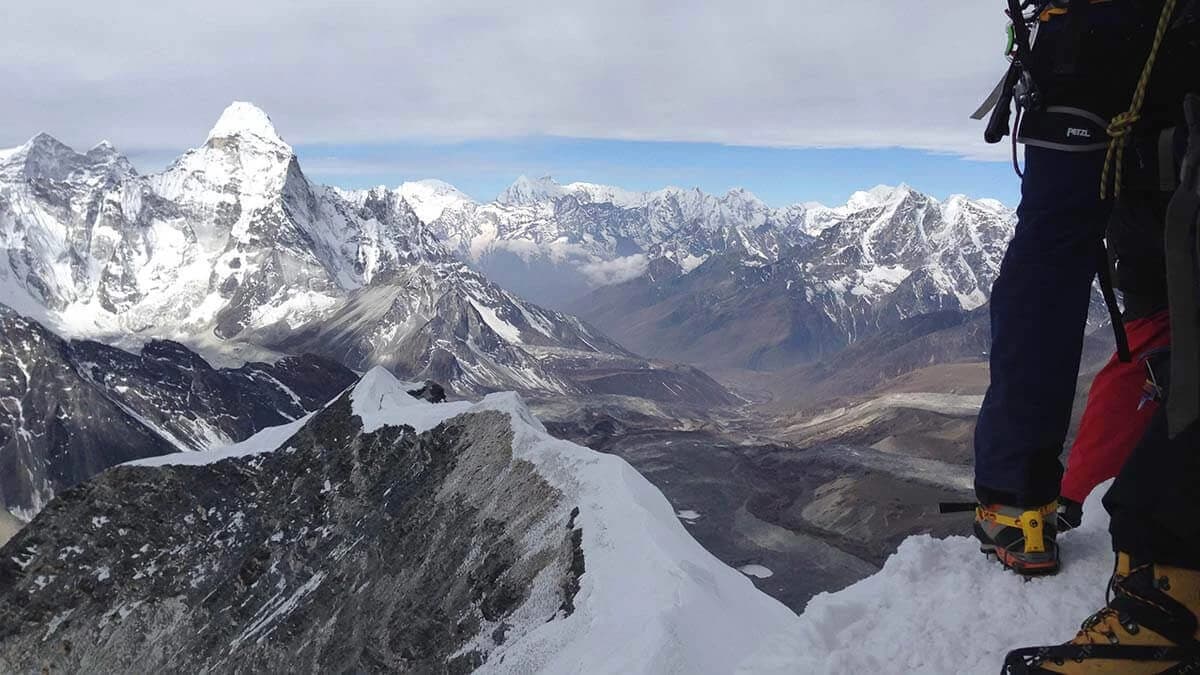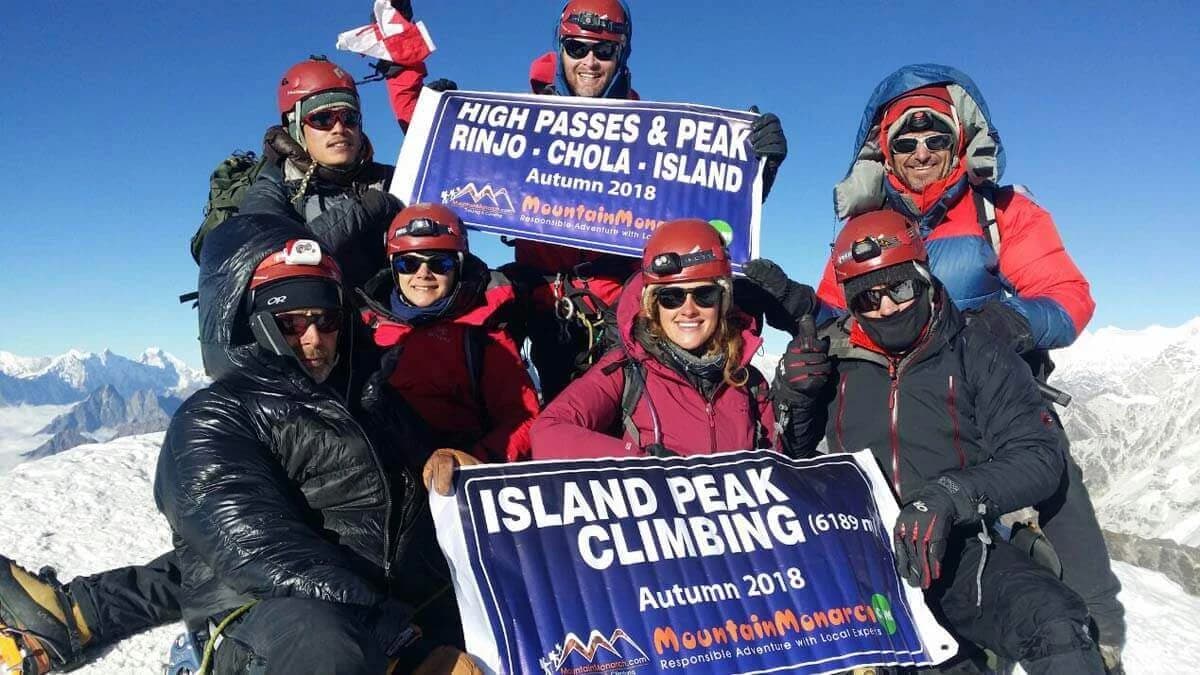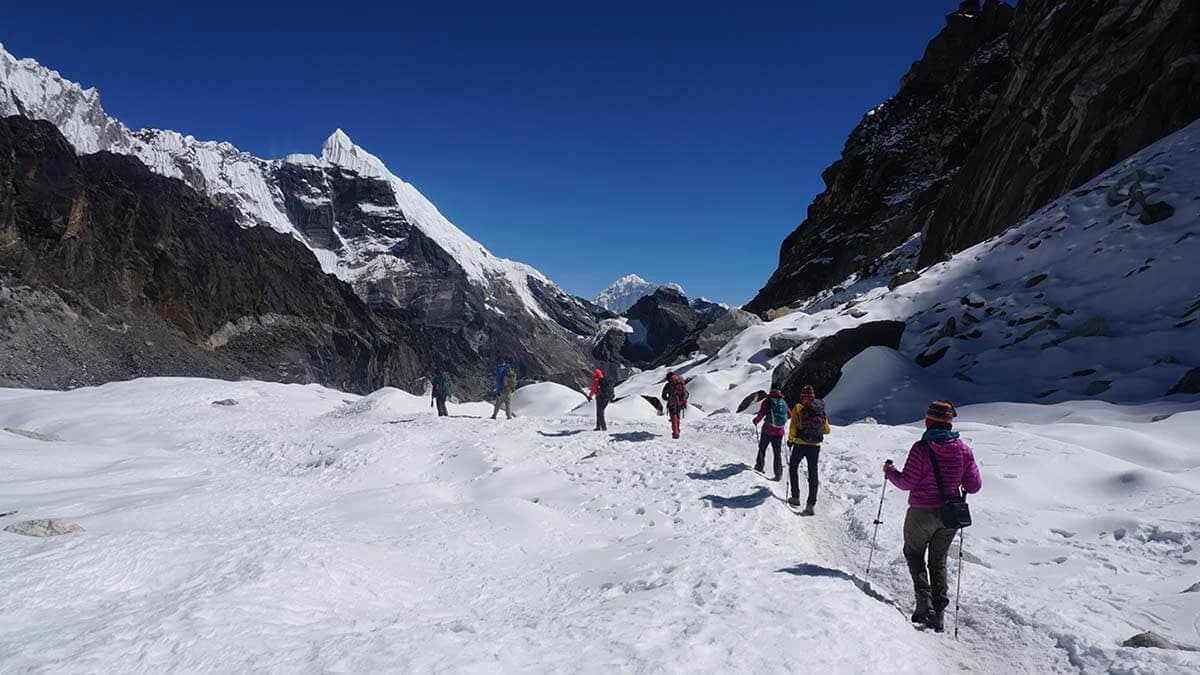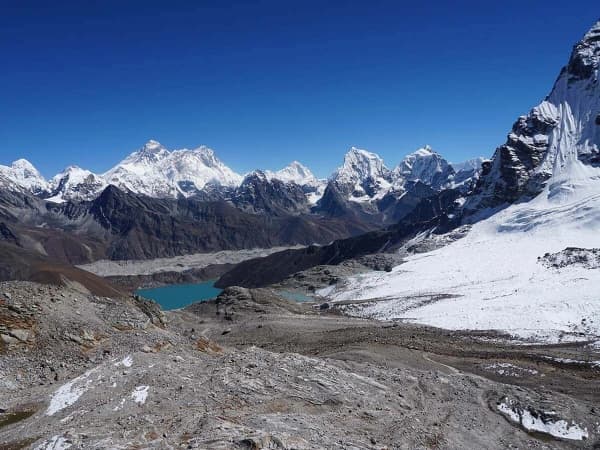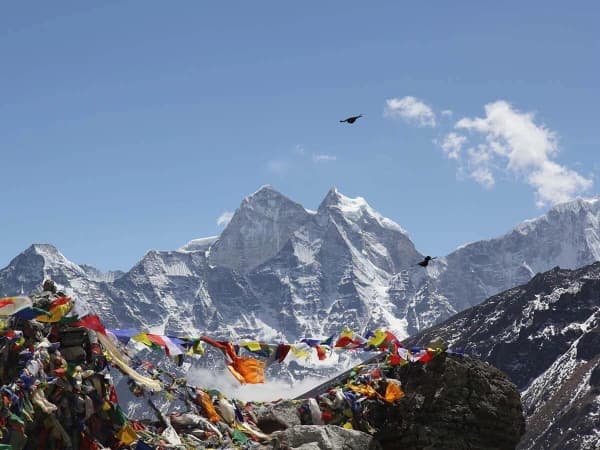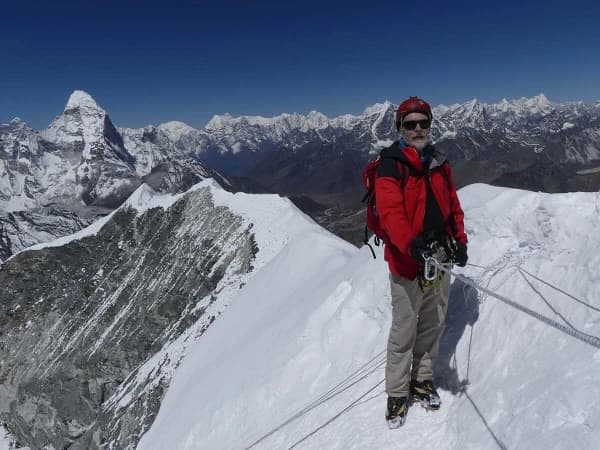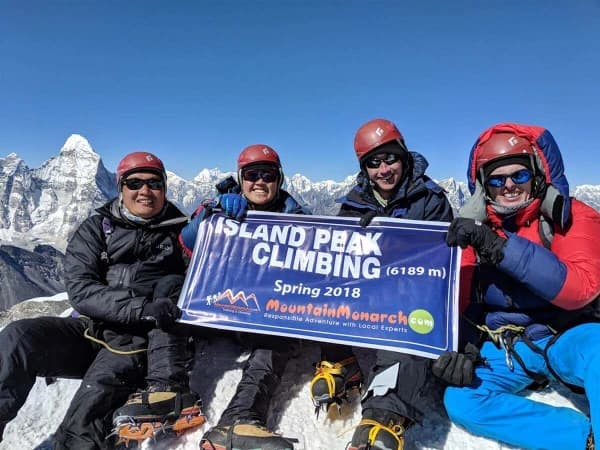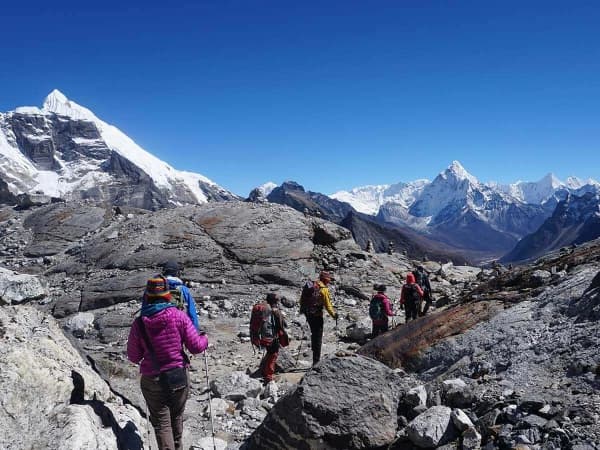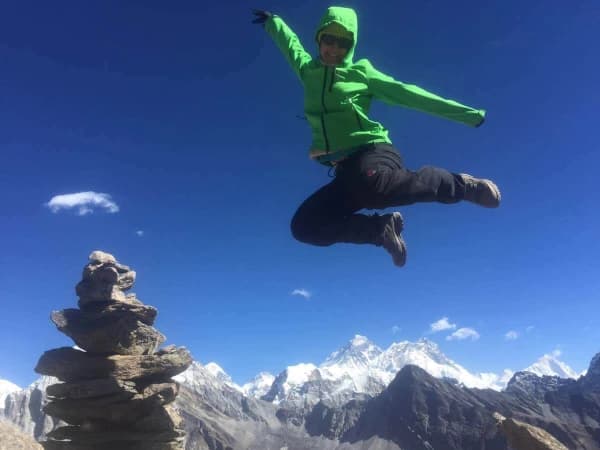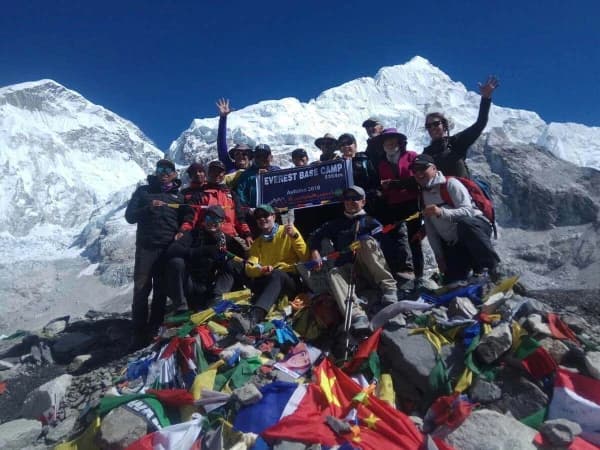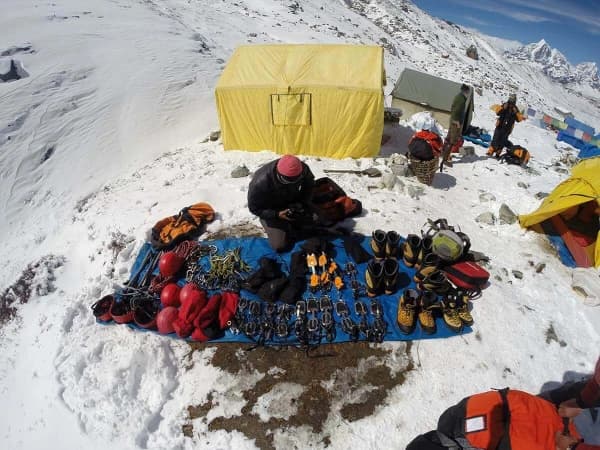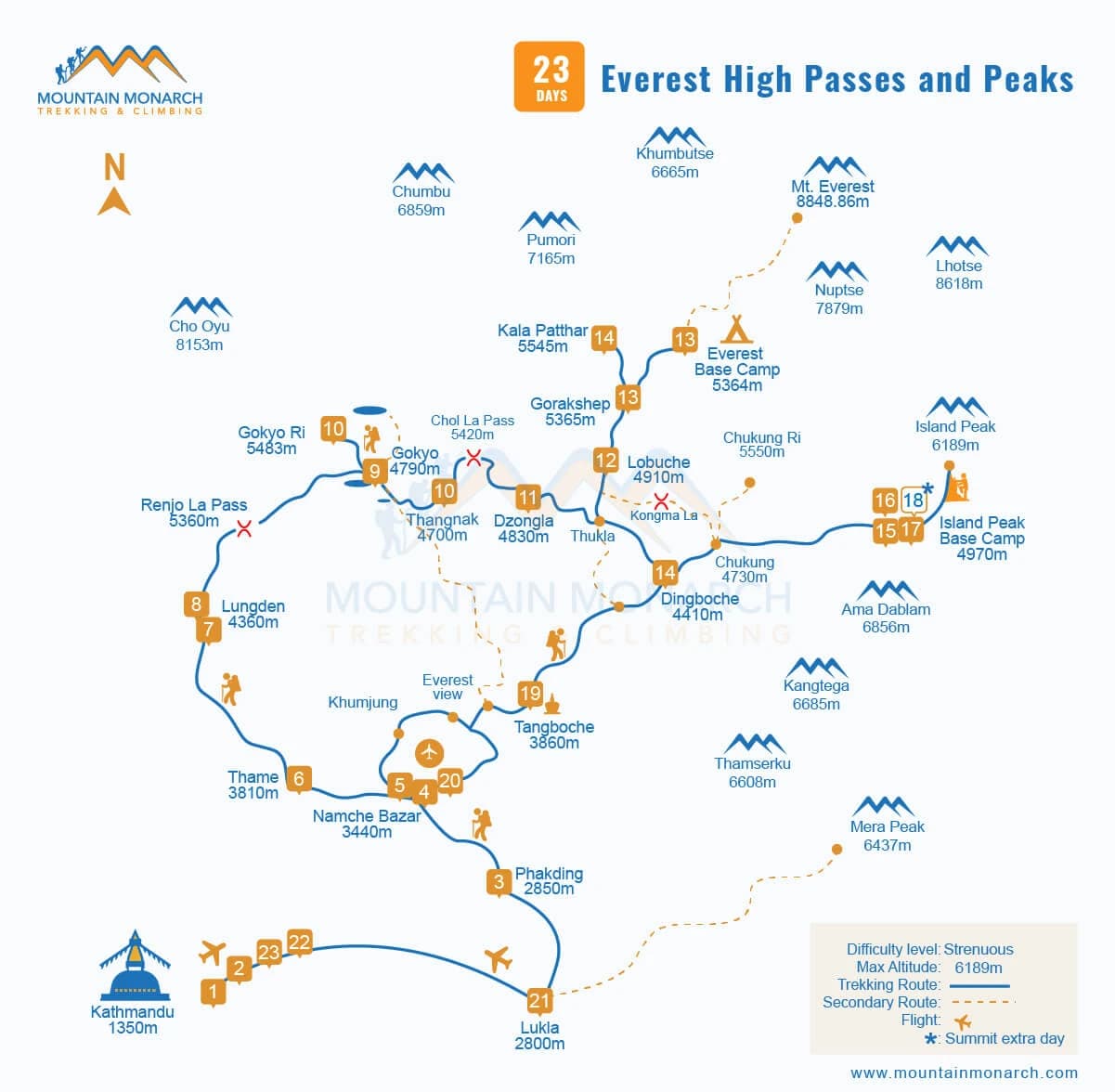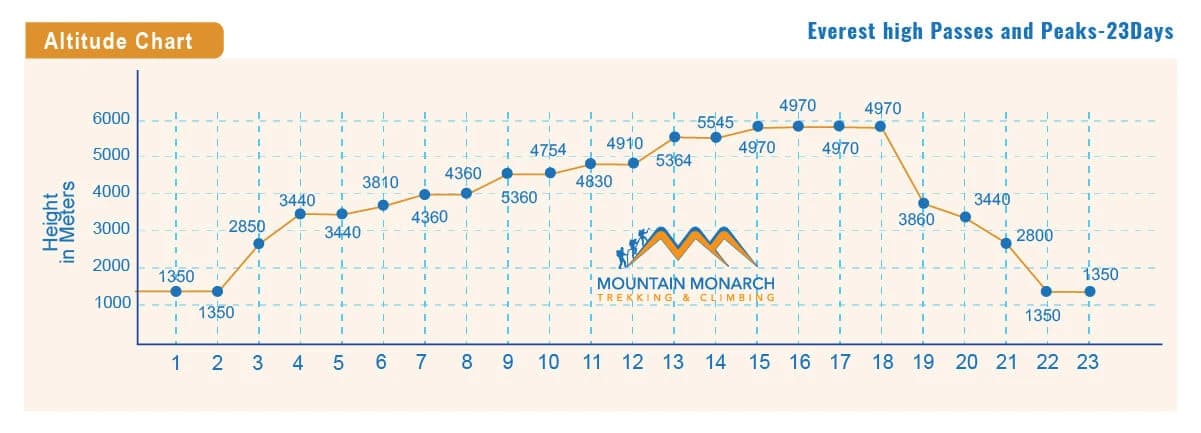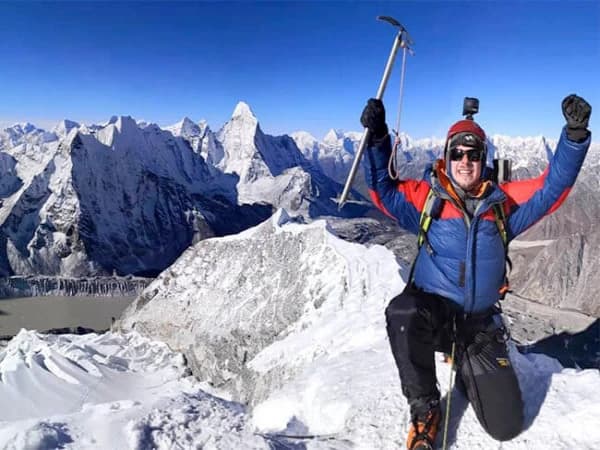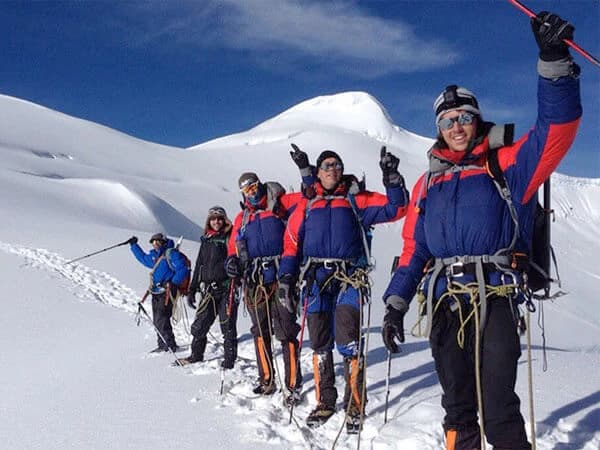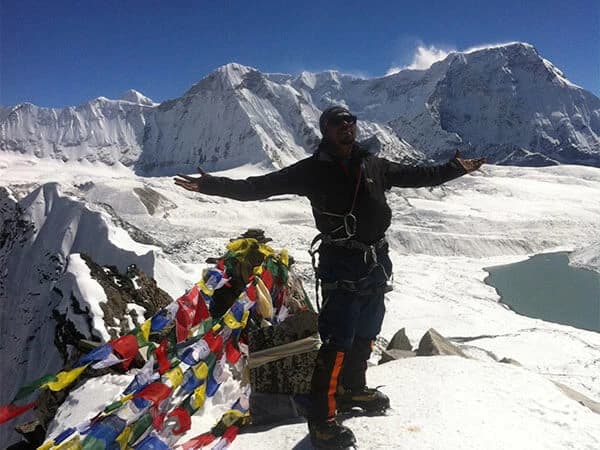Trip Overview
The Everest High Passes and Peaks trek is one of the most adventurous expeditions in the Khumbu region of Nepal, the legendary land of the highest mountain in the world, Mount Everest (8,848.86 m) above sea level. Including ascending to iconic Island Peak and two of the high mountain passes, all also serving as the best Everest viewpoints, get ready for epic rewards and challenges alike.
The Everest High Passes and Peaks Trekking Itinerary of 23 days includes two separate days for acclimatization at Namche Bazaar and Lungden. It helps to minimize the risk of acute mountain sickness (AMS) or altitude sickness that can affect anyone on high-altitude trekking and climbing trails 3,000 m above sea level, regardless of one’s experience, age, and fitness level.
At Mountain Monarch, if you wish, you can customize the Everest High Passes and Peaks Trek itinerary, including for the years 2026 and 2027. You may add extra days to explore the valleys or extend the trip with the Lobuche East Peak Climbing, Mera Peak Climbing, or the Everest Base Camp Trek. Each section of the trek offers dramatic landscapes from glaciers and turquoise lakes to panoramic Himalayan vistas.
While the exact Everest High Passes and Peaks Trek cost, including for the years 2026 and 2027, may vary based on the group size, services chosen, and extension, if any, the standard Everest High Passes and Peaks Trekking Cost from Mountain Monarch includes premium services wherever possible. 23 days Everest High Passes and Peaks Trip is handpicked by experienced professionals to ensure a hassle-free experience. Book now!
What to expect during the Everest High Passes and Peaks trekking journey?
Everest High Passes and Peaks hiking in Nepal, which includes traversing through four stunning valleys, two breathtaking high passes, and summiting three peaks, including Island Peak, the infamous Imja Tse, as the name suggests, is one of the ultimate Himalayan adventures in Everest. The expedition is a convenient option for seasoned adventurers seeking raw Himalayan wilderness and exploration.
While the stunning scenery, followed by an authentic cultural experience, makes up for the entire trek to Everest High Passes and Peaks, trekkers must stay prepared for steep ascents and descents, rugged trekking trails, and the remote nature of the valleys away from modern amenities. Suitable for beginners looking to test themselves; good physical fitness, stamina, and previous trekking experience are highly recommended.
Where can you get the best mountain views on this trek?
The trekking journey to Everest High Passes and Peaks is often called the ultimate panoramic adventure of a lifetime in the Khumbu region, which presents you with stunning mountain views at every step. The journey takes you closer to mountain giants like Lhotse, Nuptse, Baruntse, Ama Dablam, and Makalu, while certain high-altitude ridges you stop by offer you expansive 360-degree full views.
Renjo La Pass, Gokyo Ri, Cho La Pass, Everest Base Camp, Kala Patthar, and Island Base Camp are all at significant altitudes, and trekkers get to relish mind-blowing scenery. All of these monuments offer a visual feast, showcasing green valleys and charming mountain villages below, along with majestic snow-capped mountain ranges that dominate the sky horizon. The turquoise waters of Gokyo Lakes add to the scenic experience.
How are the mountain passes on this Everest Trekking Trail?
During this 23 days Everest High Passes and Peaks Trekking Itinerary, Renjo La Pass and Cho La Pass are the high mountain passes trekkers make their way through. Renjo La Pass is at an elevation of 5,360 m above sea level, and that of Cho La Pass is 5,420 m above sea level. As much as they are challenging, they are also rewarding. Expect steep ascents and treacherous terrain, crossing of glaciers, and rugged trails.
Paths are narrow, and unpredictable Himalayan weather, such as potential high winds and cold temperatures, adds to the challenges. Connecting the Gokyo Valleys with the Thame Valley and the Everest Base Camp trail at Dzongla with the Gokyo Valley at Thagnak (Dragnag), respectively, makes it safe and sound, and most of the mind-blowing views require trekkers to be both physically and mentally prepared for it.
Is Kala Patthar the highest peak of the Everest passes and peaks trekking?
While famous as the ultimate Everest viewpoint and also the highest point for those embarking on the classic Everest Base Camp Trek, Kala Patthar (approx. 5,644 m) above sea level is not the highest peak during the 23 days for the Everest High Passes and Peaks trekking itinerary. Along with this, trekkers also visit Gokyo Ri (5,357 m), which provides you with gorgeous views of the surrounding mountains, Gokyo Lakes, and vast Ngozumpa Glacier.
However, the highest elevation of the Everest High Passes and Peaks Hike is still not it and is at 6,189 m above sea level at Island Peak. After hiking to Everest Base Camp and Kala Pathar, based on the 23 days for the Everest High Passes and Peaks Trek, trekkers and climbers attempt Island Peak. The previous high-altitude hiking and sleeping low ensures you are well acclimatized and make it successfully to the top of Island Peak.
Can you visit cultural sites during the Everest High Passes and Peaks Hike?
Yes, mountain villages along the trekking route to the Everest High Passes and Peaks, such as Namche, Thame, Lungden, Gokyo, Dingboche, and Tengboche, promise immersive cultural experiences like never before. While it is a natural part of the Everest High Passes and Peaks Trip, which in fact also takes you to the isolated valleys and villages, offering you an authentic cultural experience.
If you like, you can choose to add extra days in specific locations of your preference. Tengboche Monastery, at the heart of Ama Dablam, is also the largest monastery in the entire Everest trekking region and a cultural and spiritual center. While spare days are allocated at Namche Bazaar and Lungden on this 23 days Everest High Passes and Peaks hiking trip, let us know if you prefer to explore any other cultural sites.
A diverse landscape of the Everest Himalayas in a single Trip
While the trip to Everest High Passes and Peaks visits two high mountain passes and three high peaks, including Gokyo Ri, Kala Patthar, and Island Peak, with a side trip, it typically starts from Lukla, like other popular Everest treks such as the Everest Base Camp Trek, the Everest Three High Passes Trek, and the Gokyo Lakes Trek. The trekking trail then winds through green valleys, dense forests of rhododendron, and rushing rivers.
Passing through high-altitude Sherpa villages, vibrant, colorful prayer flags, and ancient monasteries, soon above Dingboche, the Everest High Passes and Peaks Trekking route finds itself in a rugged Himalayan surrounding, giving way to alpine meadows, isolated valleys, vast snowfields, and icy ridges. Get ready to embrace the pristine wilderness of the Everest region, combined with the thrill of high-altitude adventure.
How to prepare for hiking to the Everest High Passes and Peaks
Everest High Passes and Peaks with Island Peak Expedition includes the crossing of high mountain passes, all 5,000 m above sea level, reaching the isolated valleys via a route that is known to only a few; hence, it is a strenuous yet picturesque journey that ensures an exhilarating climbing experience in the Everest Trekking Region. While it may not require climbing experience, it is a must that you possess a good level of physical fitness.
Stamina is essential; therefore, consider beginning both the mental and physical preparation at least a month before. Cardiovascular exercises such as swimming, running, and cycling; yoga for flexibility; and other activities such as stair climbing to strengthen the core, upper body, and legs are recommended. Push your limits to new heights confidently, knowing you are fully prepared for an incredible adventure into the raw Himalayan wilderness.
Things to pack for trekking to the Everest High Passes and Peaks
Appropriate trekking and climbing gear enhances the high passes with Island Peak Climbing in the Everest Himalaya of Nepal. Correct packing lists, including only those essentials, ensure increased mobility, safety, and comfort. At Mountain Monarch, we provide all necessary personal and group climbing gear, including high-quality La Sportiva climbing boots, and also supply warm gear such as a sleeping bag and a down jacket.
With all gear provided and expert support at every step, Everest High Passes and Peaks Hiking with a climb to Island Peak is designed to let you focus on conquering the high passes and peaks, including Island Peak (Imja Tse). Even in such a harsh mountain environment, we strive to provide you with an adventure that caters to both convenience and exploration, promising memories to last a lifetime.
The Best Everest High Passes and Peaks Trek Itinerary and Cost for 2026 and 2027
The 23 days for Everest High Passes and Peaks Trek itinerary begins with an adventurous trek flight to Lukla, where the team from Mountain Monarch checks essential gear and equipment for the adventure ahead. Soon, a trek along the Dudh Koshi River takes you to Namche Bazar, the official gateway to the Everest region. From here, instead of the classic Everest Base Camp trekking route, you will venture off the beaten path.
Following the serene Bhote Koshi River Valley through Thame and Lungden, you then approach the Renjo La Pass. The untouched natural beauty and view from the pass also serve as a vantage point for views of the pristine Gokyo Lakes, Mount Everest, and a parade of sky-towering peaks. Each step is rewarding and inspiring to continue the Himalayan voyage to Gokyo Ri, Cho La Pass, Everest Base Camp, Kala Patthar, and Island Peak.
On booking this Everest High Passes and Peaks Trek itinerary with Island Peak Climbing, Sherpa mountain guides conduct comprehensive climbing training sessions, safety tips, and essential techniques. Along with the extra acclimatization days in Namche Bazaar, Lungden, and Island Peak Base Camp, there is a contingency day in case of bad weather; hence, it is regarded as one of the best Everest trekking and climbing routes.
After celebrating the historic achievement, you will descend via Thyangboche back to Namche, completing an extraordinary circuit through four iconic valleys: Bhote Koshi, Gokyo, Khumbu, and Imja Tse. While our Everest High Passes and Peak Trek cost, including for the years 2026 and 2027, covers expenses for meals, lodging, transport, gear and equipment, and mountain guides, it also creates memories of a lifetime in the heart of the Everest region.
Bookings are open for 2026 and 2027 - join with a professional on this epic Himalayan Odyssey!
The combined hiking to Everest mountain passes and peaks, including climbing to the Island Peak, is a remarkable Himalayan odyssey that combines exploration, adventure, triumph, and a once-in-a-lifetime experience of conquering the major peaks of the Everest Himalayas. A bucket list destination for extraordinary thrill seekers who do not mind pushing their limits, the trip covers both the popular and less trodden trekking paths.
Rewarding you with spectacular panoramic views of the snow-capped mountain ranges like Lhotse, Nuptse, Baruntse, Ama Dablam, Makalu, and others, along with lush valleys, hills, and charming mountain villages, when with professionals like Mountain Monarch, a team of well-experienced, trained guides, porters, and mountaineers, safety and satisfaction are paramount. Reserve your seat for a truly magical experience now for 2026 and 2027.

